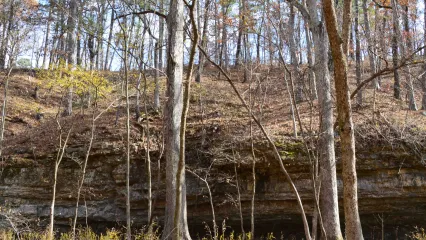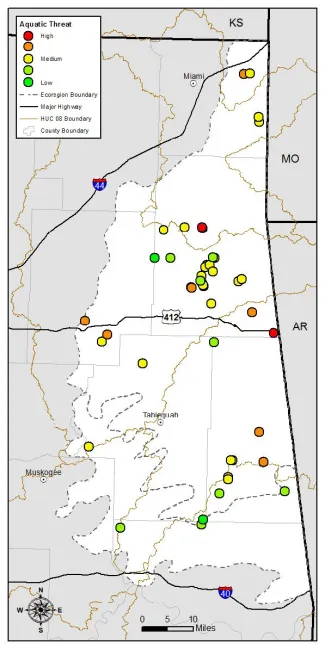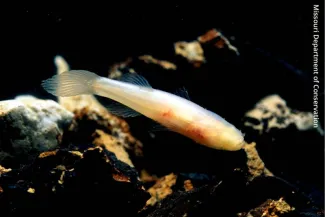The Wildlife Department and longtime partner in conservation The Nature Conservancy recently found areas within the Ozark Mountains where conservation could be focused to benefit individual populations and entire species. Priority conservation areas were identified for 28 species, many of which are known from only a handful of locations in Oklahoma.
Dissolving rock, sinkholes, belowground drainages and caves may not sound like the best places to find wildlife, but these precarious and lowlight terrains are the perfect hideout for some of the Ozark’s most unique species.

To find the most sensitive of these underground habitats, the Wildlife Department partnered with The Nature Conservancy, a private conservation organization, to identify where the greatest risks occurred within the range of 28 cave-dependent species. At least 22 of those species are known from less than 10 sites in our state, six are found only in Oklahoma.
Each species was assessed and given an adaptability score across a range of changing conditions. Locations with less adaptable species are of higher conservation priority than locations with more adaptable species. Areas with higher threats (that are of higher conservation priority) appear red in the map, areas with lower threats (that are of lower conservation priority) appear green.

Red dots show areas of higher threat for the 16 species analyzed in the aquatic community group. Green dots show areas of lower threat for this group.
To survive the darkened conditions, some species that live in these Ozark undergrounds rely on senses other than sight. Bats depend on the same echolocation they use to find insects outside of their roosts to navigate the cave’s dark corridors. Other examples are more extreme; the Oklahoma cave crayfish and Ozark cavefish both rely on sensory organs to navigate because they are considered blind, having no eyes or only rudimentary eyes.

Species living in these sensitive habitats, especially those that leave the caves to find food, need to be able to find insects in forested areas and surrounding creeks. Other species tied to the underground water systems have to contend with groundwater changes like pollution and sedimentation. Many of these species are also vulnerable to the simple presence of humans; visitation may lead to drastic changes to these cave dwellers’ immediate habitat even if the changes are subtle or unnoticed by the visitors.
With help from our partners in conservation, the Wildlife Department is working to better understand the needs of our wildlife and identify the places in greatest need of conservation.
Financial support for this project was provided by the Oklahoma Department of Wildlife Conservation through the State Wildlife Grants Program Grant F14AF01228 and by The Nature Conservancy.